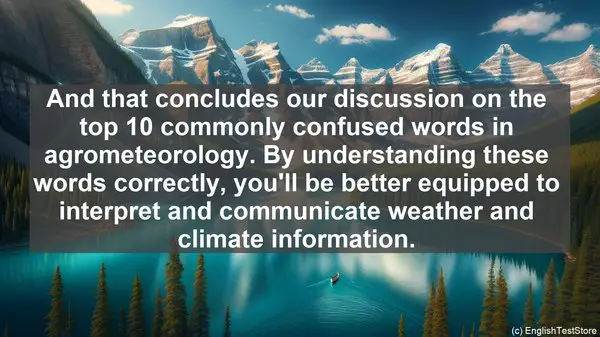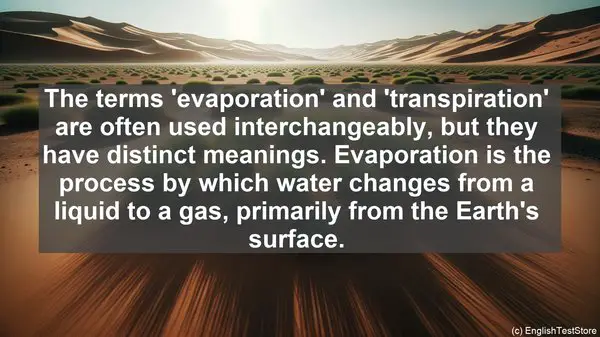Introduction
Welcome to today’s agrometeorology class. In this session, we will be discussing the top 10 commonly confused words in agrometeorology. Understanding these words correctly is crucial for a successful career in this field. So, let’s dive in!
1. Weather vs. Climate
The first pair of words that often causes confusion is ‘weather’ and ‘climate.’ While weather refers to the atmospheric conditions at a specific time and place, climate represents the long-term patterns and averages of weather in a particular region. So, weather is like the current mood of the atmosphere, while climate is its overall personality.
2. Evaporation vs. Transpiration
The terms ‘evaporation’ and ‘transpiration’ are often used interchangeably, but they have distinct meanings. Evaporation is the process by which water changes from a liquid to a gas, primarily from the Earth’s surface. On the other hand, transpiration is the release of water vapor from plants into the atmosphere. So, while evaporation is more about water bodies, transpiration is about plants.
3. Forecast vs. Prediction
Many people think ‘forecast’ and ‘prediction’ mean the same thing, but in agrometeorology, they have different connotations. A forecast is a more specific and detailed statement about future weather conditions, often backed by scientific models. On the other hand, a prediction is a more general statement about what might happen, often based on experience or intuition.
4. Rainfall vs. Precipitation
While ‘rainfall’ specifically refers to the amount of rain that falls from the atmosphere to the ground, ‘precipitation’ is a broader term. Precipitation includes all forms of water, both liquid and solid, that fall from the atmosphere, such as rain, snow, sleet, or hail. So, rainfall is a subset of precipitation.

5. Drought vs. Aridity
Although both ‘drought’ and ‘aridity’ imply a lack of water, they differ in their scope. A drought is a temporary period of below-average precipitation, leading to water scarcity. Aridity, on the other hand, is a long-term characteristic of a region, indicating its natural dryness. So, while a drought can be alleviated, aridity is a more permanent feature.
6. Anemometer vs. Wind Vane
When it comes to measuring wind, two common instruments are the anemometer and the wind vane. An anemometer measures the speed of the wind, while a wind vane indicates its direction. So, if you want to know how fast the wind is blowing, use an anemometer. But if you’re interested in its direction, a wind vane is the right tool.

7. Humidity vs. Relative Humidity
Humidity refers to the amount of moisture present in the air. Relative humidity, on the other hand, is a measure of how much moisture the air is holding compared to the maximum it can hold at a given temperature. So, while humidity is an absolute measure, relative humidity is expressed as a percentage, indicating the air’s saturation level.
8. Frost vs. Freeze
Although both ‘frost’ and ‘freeze’ involve the formation of ice, they occur under different conditions. Frost typically forms on surfaces, such as the ground or plants, when the temperature drops below freezing point and the moisture in the air condenses directly into ice. Freezing, on the other hand, refers to the temperature itself, indicating that it has dropped below the freezing point of water.
9. Front vs. Frontal System
In agrometeorology, ‘front’ and ‘frontal system’ are often used interchangeably, but they have slightly different meanings. A front is a boundary between two air masses with different characteristics, such as temperature or humidity. A frontal system, on the other hand, refers to the entire weather system associated with a front, including the clouds, precipitation, and other atmospheric phenomena.
10. Monsoon vs. Monsoon Season
The term ‘monsoon’ is often used to describe a seasonal wind system that brings significant rainfall. However, ‘monsoon season’ specifically refers to the period when these winds are active and result in heavy precipitation. So, while the monsoon is the wind, the monsoon season is the time when it brings the much-needed rain.
